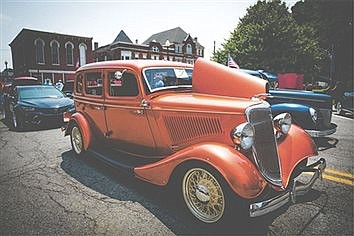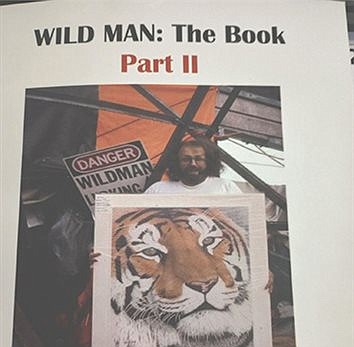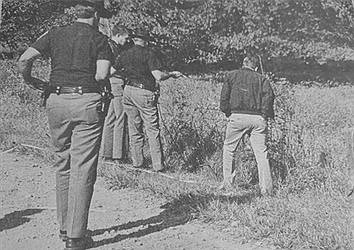This week in hoosier history: the great squirrel invasion of 1822
September 14, 2023 at 12:05 a.m.

During the second half of September 1822, the city of Indianapolis found itself under attack from an unexpected enemy: gray squirrels. These furry invaders embarked on a massive westward migration, crossing rivers and swarming through the town in countless numbers. The impact was devastating, with entire cornfields being lost and the regional corn crop being literally destroyed. Local attorney Calvin Fletcher described the severity of the situation, noting that the damage caused by 12 squirrels equaled that of a single hog. In just three days, one farmer managed to kill 248 squirrels in a single cornfield.
This phenomenon was not unique to Indianapolis. Throughout the 19th century, similar migrations occurred periodically across North America, as documented by hunters, farmers, and explorers. The squirrels moved in a southeasterly direction, crossing major bodies of water such as the Ohio, Niagara, and Mississippi rivers. The reasons behind these migrations remain unclear, but it is believed that a surplus of nuts and seeds in one year led to a boom in the squirrel population, followed by a scarce year where the surrounding woodlands couldn't produce enough food to sustain the increased numbers. This scarcity likely triggered the migration.
Indianapolis experienced several other squirrel migrations over the decades, with the most notable occurrence happening in 1845. Although it was less extensive and destructive compared to the 1822 invasion, the squirrels still caused significant damage, amounting to thousands of dollars.
While the images seem fantastical and comical to this author, the 1822 invasion was no laughing matter. It was just a year after the founding of Indianapolis, the settlers and their farms were in the throes of survival when they faced this unprecedented threat. Calvin Fletcher described the situation as a “raid by marauding invaders.”
The sheer number of squirrels in 1822 is unimaginable for modern city dwellers. Additionally, it's worth noting that the squirrels of that time were black-and-grey, unlike the red squirrels commonly seen today. The wildlife in early 19th-century Indianapolis was remarkable, with thousands of deer roaming the woods. The settlers also faced challenges from dense swarms of flies and mosquitoes, so much so that fires were lit to keep them at bay. These relentless pests tormented the cattle, causing them to grow thin, while the hardy hogs thrived in the uncleared woods until being rounded up and taken to market.
For present-day residents of Indianapolis, it might be difficult to imagine an invasion of squirrels so severe that it stripped trees and devastated farmers' fields. Nevertheless, the Great Squirrel Invasion of 1822 remains a forgotten chapter in the state's history, revealing the challenges faced by early settlers and the remarkable wildlife that once inhabited the area.
Latest News
E-Editions
Events
During the second half of September 1822, the city of Indianapolis found itself under attack from an unexpected enemy: gray squirrels. These furry invaders embarked on a massive westward migration, crossing rivers and swarming through the town in countless numbers. The impact was devastating, with entire cornfields being lost and the regional corn crop being literally destroyed. Local attorney Calvin Fletcher described the severity of the situation, noting that the damage caused by 12 squirrels equaled that of a single hog. In just three days, one farmer managed to kill 248 squirrels in a single cornfield.
This phenomenon was not unique to Indianapolis. Throughout the 19th century, similar migrations occurred periodically across North America, as documented by hunters, farmers, and explorers. The squirrels moved in a southeasterly direction, crossing major bodies of water such as the Ohio, Niagara, and Mississippi rivers. The reasons behind these migrations remain unclear, but it is believed that a surplus of nuts and seeds in one year led to a boom in the squirrel population, followed by a scarce year where the surrounding woodlands couldn't produce enough food to sustain the increased numbers. This scarcity likely triggered the migration.
Indianapolis experienced several other squirrel migrations over the decades, with the most notable occurrence happening in 1845. Although it was less extensive and destructive compared to the 1822 invasion, the squirrels still caused significant damage, amounting to thousands of dollars.
While the images seem fantastical and comical to this author, the 1822 invasion was no laughing matter. It was just a year after the founding of Indianapolis, the settlers and their farms were in the throes of survival when they faced this unprecedented threat. Calvin Fletcher described the situation as a “raid by marauding invaders.”
The sheer number of squirrels in 1822 is unimaginable for modern city dwellers. Additionally, it's worth noting that the squirrels of that time were black-and-grey, unlike the red squirrels commonly seen today. The wildlife in early 19th-century Indianapolis was remarkable, with thousands of deer roaming the woods. The settlers also faced challenges from dense swarms of flies and mosquitoes, so much so that fires were lit to keep them at bay. These relentless pests tormented the cattle, causing them to grow thin, while the hardy hogs thrived in the uncleared woods until being rounded up and taken to market.
For present-day residents of Indianapolis, it might be difficult to imagine an invasion of squirrels so severe that it stripped trees and devastated farmers' fields. Nevertheless, the Great Squirrel Invasion of 1822 remains a forgotten chapter in the state's history, revealing the challenges faced by early settlers and the remarkable wildlife that once inhabited the area.





